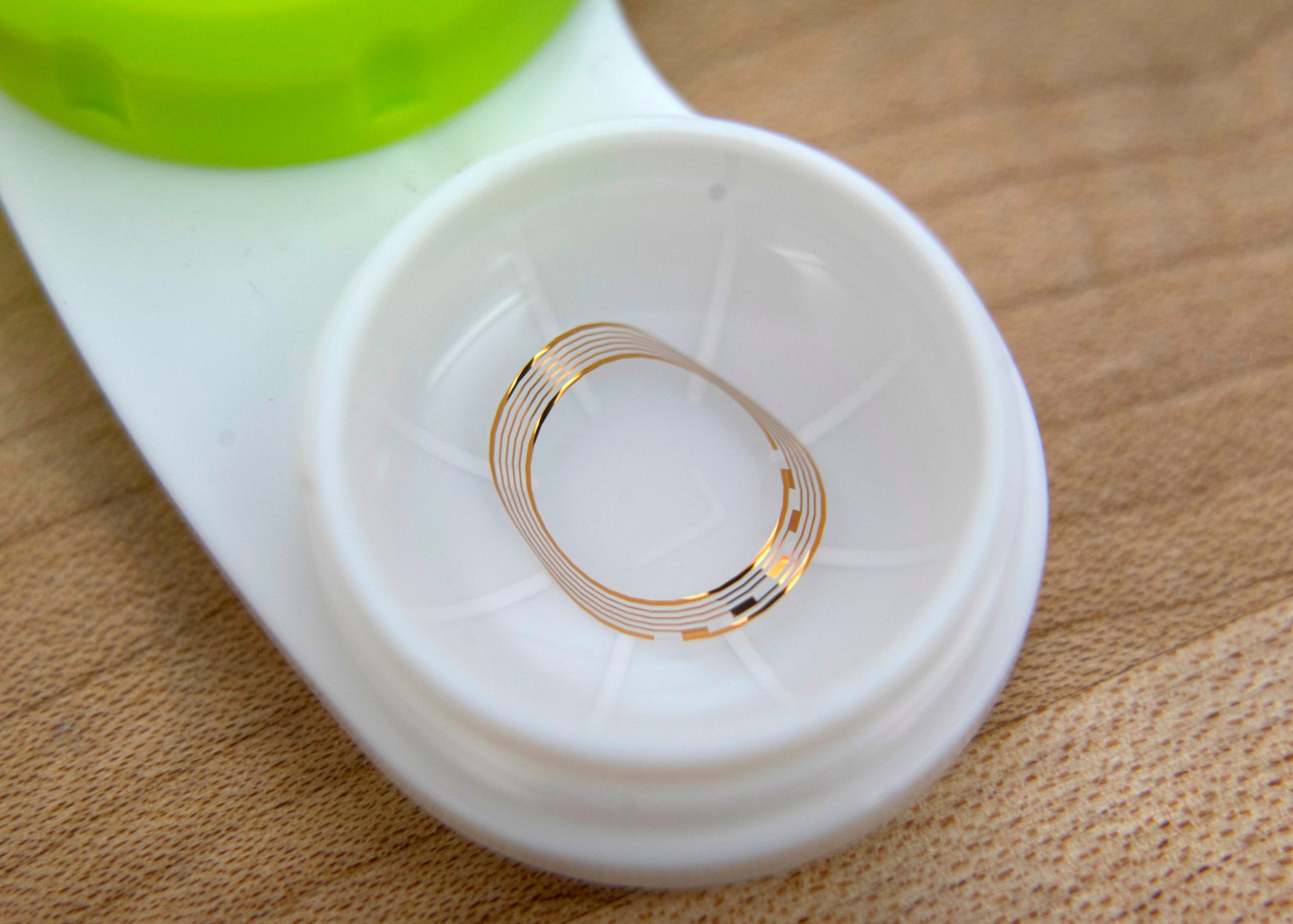Purdue Visionaries Build Device to Prevent Blindness
 Bionode's technology originally required contacts
Bionode's technology originally required contacts
Subscriber Benefit
As a subscriber you can listen to articles at work, in the car, or while you work out. Subscribe NowAn Indianapolis-based startup believes its device could be groundbreaking in the world of ophthalmology—and life-changing for patients with glaucoma. The disease is the second-leading cause of blindness, but Purdue-affiliated startup Bionode says its noninvasive technology—enveloped in off-the-shelf contact lenses and glasses—reverses the physical cause of glaucoma. Driven by the vision of researchers at Purdue, the technology could be on the market in a matter of months.
Glaucoma is caused by fluid buildup in the front part of the eye; the extra fluid increases the pressure in the eye, damaging the optic nerve and ultimately causing blindness. Bionode’s technology involves adding a gold trace to an off-the-shelf contact lens, which then works hand-in-hand with specially-equipped glasses.
“The glasses generate a magnetic field, the contact picks it up, turns it into a current and drives the current into the structures of the eye,” says Bionode Chief Technology Officer Dr. Pedro Irazoqui, who is also an electrical and computer engineering and biomedical engineering professor at Purdue.
By electrically stimulating the muscles around the canal where fluid leaves the eye, pressure on the optic nerve is relieved, preventing vision loss. Irazoqui likens the fluid-filled interior chamber of the eye to a clogged sink, and says Bionode does some expert plumbing.
“Think of it as a sink filled with water, and the drain is closed. You open it up so the water can now flow around that clog,” says Irazoqui. “If you look at the pressure in the eye, it’s actually going down a lot faster than we would expect just from that opening of the drain.”
Even more important than relieving the clog, says Irazoqui, is that Bionode’s technology also turns down the “faucet” while opening the drain—a double whammy that relieves pressure in the eye.
“It’s interesting to think that using these electrical currents, we can actually get much more specific control down to whether we [manipulate] the drain, the faucet or both,” says Irazoqui, “and to what extent we [manipulate] them—and we can really dial it in.”
Because most glaucoma patients are over 40, when the eyes naturally produce less tears—and contacts exacerbate dry eyes—Bionode has improved the technology in recent months to produce the same effect with glasses only.
“The new design works as well as the old design, but it has no contact lens,” says Irazoqui. “We can still use the contact lens to give the patient an even bigger kick, but I think most patients won’t need the contact lens. And now, we have a deeper understanding of how it all works.”
Bionode believes the result is a therapy that’s far superior to existing glaucoma treatments; medicated eye drops eventually stop working and have low patient compliance, laser eye surgery can only be performed a limited number of times, and a blood procedure that allows liquid to leak out of an open wound in the eye carries a high risk of infection.
Bionode says the device relieves eye pressure in a matter of minutes, but an upcoming clinical trial will answer a looming question: how long will the effect last? In the coming weeks, Bionode will begin a human clinical trial involving 30 patients in Canada to evaluate how long the therapy is effective and generate data that could eliminate the need for additional trials in the U.S.
“[The FDA] is going to ask some very specific questions, so we will structure this study [in Canada] in such a way that it answers the questions the FDA is going to ask,” says Irazoqui. “We’re partnering with the right people who have the experience in putting together these clinical trials in ophthalmology for devices that have been approved by the FDA.”
Irazoqui says commercializing the device by late summer 2018 is “optimistic, but not crazy.” Bionode’s funding includes $100,000 from the Elevate Purdue Foundry Fund and $1 million from an anonymous investor.
“The goal is to build medical devices that are clinically relevant—that’s what gets me out of bed in the morning. I want a device that we invented at Purdue to make it all the way to the clinic and change people’s lives,” says Irazoqui. “[Glaucoma] is the second leading cause of blindness, so the impact is huge. That’s a lot to be excited about.”
Irazoqui says the technology has been refined to eliminate the contact lens, requiring the patient to wear only glasses with hidden coils.
Irazoqui describes the path that could lead to Bionode’s technology being commercialized in 2018.
